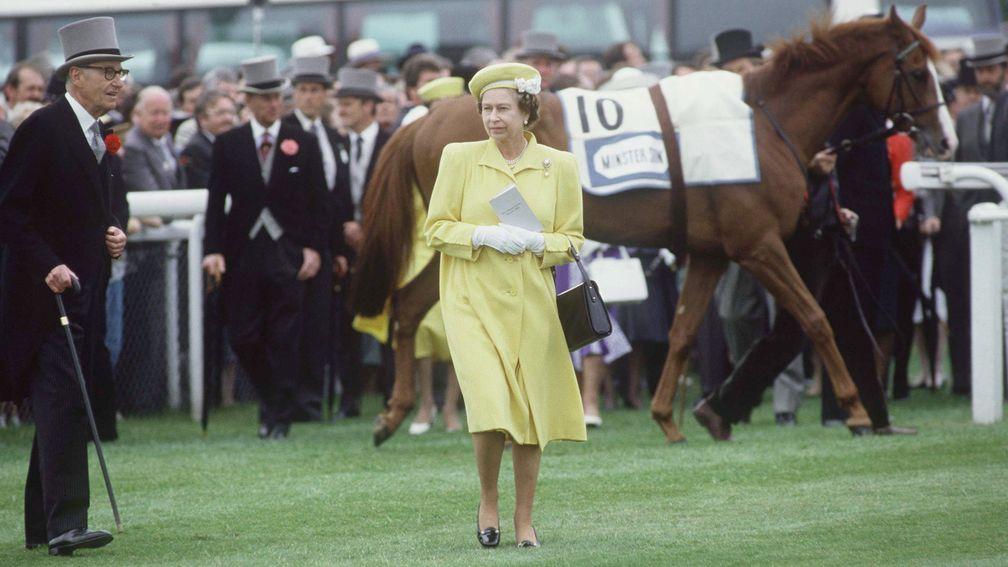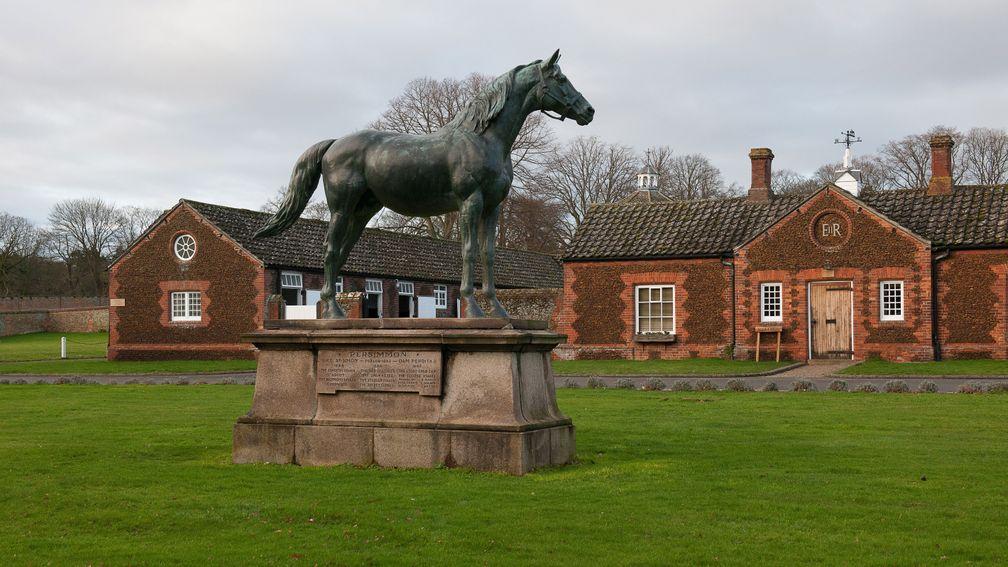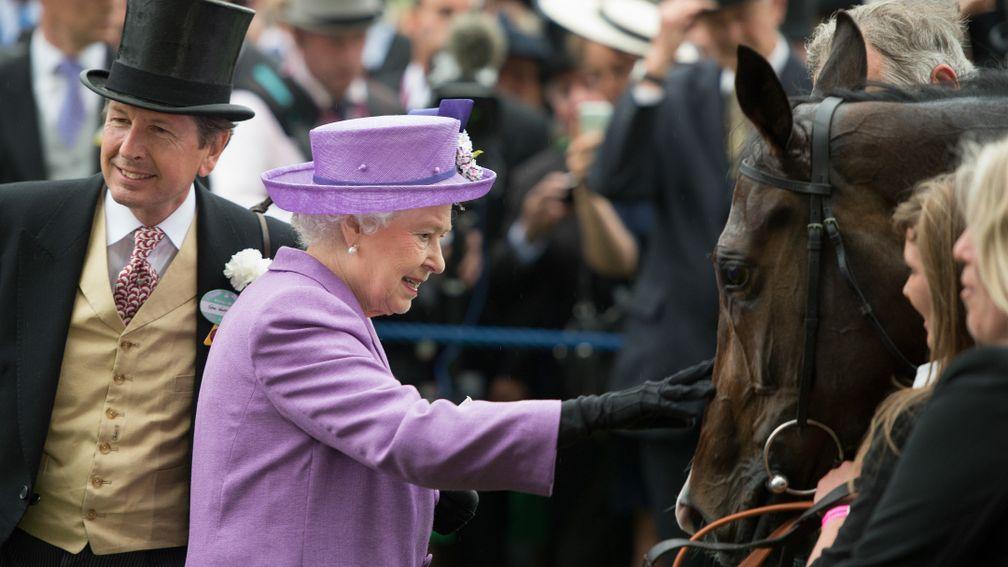A towering influence boasting an intuition that comes with time and experience

It was as a 16-year-old while visiting her father’s Classic winners Big Game and Sun Chariot at Fred Darling’s Beckhampton yard that Queen Elizabeth II became enthralled with the thoroughbred. Allowed to stroke the King’s Derby colt Big Game, it has become part of history how the young princess was so taken with the horse that she did not wash her hands for several hours afterwards.
It was a passion that never dimmed and, indeed, the Queen once confided that in another life she would like to have lived as a country lady surrounded by horses and dogs.
As in all aspects of the Queen’s reign, her role as custodian of the Royal Studs was underpinned by an intuition that comes with time and experience. An accomplished horsewoman herself, there is no doubt that she gained much enjoyment out of the breeding of racehorses, as illustrated by her long-standing role as patron of the Thoroughbred Breeders Association.
Yet there was a wealth of knowledge - it is said that she could recite minor details relating to all her bloodlines - that saw the beneficial need of thinking at times outside the box, whether in the addition of new blood, the patronisation of stallions on an international scale or investments into Shirley Heights and Bustino, both of whom became stalwart Royal Studs stallions of their time.
Along the way, various advisers, among them Captain Charles Moore, Lord Carnarvon, Sir Michael Oswald and John Warren, have naturally played a crucial role.
That early trip to Beckhampton lit a spark that was recognised by Captain Charles Moore, then racing manager to King George VI. It was under his guidance, and that of the royal trainer Captain Cecil Boyd-Rochfort, that the princess’ keen interest in racing flourished, something that was captured on film when she attended Newmarket in 1945 to watch her father’s homebred Hypericum win the Dewhurst Stakes.
The princess had followed Hypericum’s development from her days as a foal at Hampton Court, and was also present when the filly won the following year’s 1,000 Guineas. Two years later Hypericum’s half-sister Angelola won the Yorkshire Oaks, a victory that was emulated a further two years on by another sibling, Above Board.
And there lies the crux of the Royal Studs' success; Hypericum, Angelola and Above Board were out of a remarkable mare in Feola, a daughter of Friar Marcus who had been purchased by King George V for 3,000gns as a yearling and later run second in the 1936 1,000 Guineas.
Feola’s breeding days were behind her by the time the Queen inherited the bloodstock belonging to her father upon his death in 1952, but it was already very apparent even at that stage that her line would become of great value to the Royal Studs.

Among the racehorses inherited by the Queen was a two-year-old Hyperion colt out of Angelola named Aureole. As was typical of some of the better Hyperions, Aureole was not an easy horse to handle, requiring plenty of patience from Boyd-Rochfort and an eventual jockey switch from Harry Carr to Eph Smith for him to fulfil his potential.
But, at his best, the flashy chestnut was one of the most talented horses to carry the royal silks, winning the Lingfield Derby Trial at three and the Coronation Cup and King George at four. His second to Pinza in the 1953 Derby, held just days following the Queen’s Coronation, was also to be the closest the Queen came to tasting Derby success.
Aureole later stood at Wolferton Stud near King’s Lynn, Norfolk, where he became a dual champion stallion, notably as the sire of Derby hero St Paddy and Arc winner Saint Crespin III.
As for Hypericum, she became the granddam of Highclere, the first filly to pull off the Newmarket 1,000 Guineas and Prix de Diane double, and therefore the third dam of Height Of Fashion and ancestress of Deep Impact.
Her half-sister Above Board also did her bit to further the family as the dam of Doutelle, winner of the Cumberland Lodge, John Porter and Ormonde Stakes, and Above Suspicion, winner of the St James’s Palace Stakes.
It is interesting to note that when the Queen was asked by Horse & Hound in the summer of 2020 for her five favourite racehorses of all time, Aureole, Doutelle and Highclere all featured.
Doutelle died young at Sandringham Stud and it was reportedly in light of her affection for the horse that the Queen instructed Moore to purchase a yearling by the stallion at the 1961 yearling sales.
Moore settled on a half-sister to the 1955 Queen Mary Stakes winner Weeber and the filly in question, Amicable, proved to be an excellent choice, winning the Nell Gwyn Stakes and finishing a close second in the Yorkshire Oaks.
More importantly, it is her line that sits today behind Reach For The Moon, last year's Solario Stakes winner who was second in the Hampton Court Stakes at Royal Ascot in June, via his high-class granddam, the Ribblesdale, St Simon and Geoffrey Freer Stakes winner Phantom Gold, herself a granddaughter of the Queen’s 1979 Ribblesdale Stakes winner Expansive.
Phantom Gold is also the third dam of Twilight Gleaming, the 2021 Breeders' Cup Juvenile Turf Sprint winner who has won two of her three starts this year.
The introduction of other families also yielded rewards.
Out of a visit to Doncaster sales in 1956 came the 1,150gns purchase of a yearling filly by the sprinter Luminary. Later named Stroma, she foaled Eclipse Stakes winner Canisbay and was the granddam of Dunfermline, winner of the 1977 Oaks and St Leger during the Queen’s Silver Jubilee year.
Sadly, neither Dunfermline or her talented half-sister Tartan Pimpernel produced anything near their talent at stud and the line died out.
Contralto, a dual winner bought to inject some speed into the stud during the late 1970s, is responsible for the line carried today by the classy sprinter King’s Lynn.
Then there was Malapert, who was purchased in 1949 to send to the King’s stallion Kingstone (a son of Feola) and ended up producing the Queen’s 1958 2,000 Guineas hero Pall Mall.
In turn, Pall Mall sired the high-class filly Albany out of the Queen’s champion Almeria, winner of the 1957 Yorkshire Oaks and Ribblesdale Stakes. Almeria, being tightly inbred to Hyperion, was an early example of willingness to experiment with bloodlines.
More recently, the private purchase of Albany and Cherry Hinton Stakes winner Memory yielded three talented Galileo colts in Recorder, Call To Mind and Learn By Heart. The stud has also welcomed top Australian sprinter Sweet Idea, sourced privately in 2015 out of her native country, while Marl, a relatively inexpensive 45,000gns purchase through John Warren in 1997, sits behind the family responsible for Light Refrain, a Group 3 winner last year.
Of course, as with any sizeable breeding operation, there were the ones that got away.
Knight’s Daughter, by Sir Cosmo and out of Feola, was sold just before the King’s death in 1951 to Bull Hancock of Claiborne Farm, for whom she produced the outstanding American runner Round Table and founded an almighty dynasty.
Then there was Height Of Fashion, a Bustino daughter of Highclere inbred to Feola.
Winner of the Fillies’ Mile for Major Dick Hern, she was sold midway through her three-year-old season for a reported £1.5 million to Hamdan Al Maktoum. The Queen used the sale to fund her purchase of Hern’s base of West Ilsley Stables from Sir Michael Sobell and Lord Weinstock.
Sheikh Hamdan, on the other hand, came into possession of a blue hen that would yield him Nashwan and Unfuwain in addition to a family latterly responsible for the likes of Ghanaati and the brilliant Baaeed.
On the face of it, the sale of Height Of Fashion was a serious error, especially as her success for Shadwell came while the Royal Studs were undergoing a quiet period. However, it has to be questioned whether the mare would have received opportunities with Northern Dancer or Blushing Groom and the like had she remained in royal ownership.
As it was, the Queen had plenty of the family at that stage - for a time, they included Height Of Fashion’s talented half-sister Burghclere, the granddam of Deep Impact.
Against that, the decision to become a major shareholder in Shirley Heights meant that, for the best part of two decades, Sandringham Stud was home to one of Britain’s most successful sires. Similarly, Bustino became an important influence at Wolferton, while in later years the stallion arm housed Motivator and Royal Applause, both Group 1 sires.
Never was the Queen’s interest confined to just domestic shores. A natural curiosity in the breed alongside an interest in the development of the Royal Studs prompted the use of American stallions as far back in 1963, when the Nearco mare Near Miss was sent to Native Dancer.

Regular forays into the Kentucky scene followed. The mares were based at Lane’s End and Mill Ridge Farms, and those at the latter still fondly recall how the Queen spent her visits walking the fields where her stock resided. Other Kentucky visits in 1984 and 1986 were captured by photographer Tony Leonard; one image shows the monarch offering a peppermint to Round Table, then an antique 32-year-old in retirement at Claiborne Farm.
More recently, the recognised need to invigorate the stud’s bloodlines has been aided by regular gifts from Sheikh Mohammed and the Aga Khan, alongside the use of Deep Impact in Japan.
Various gifts have in particular done their bit to keep the royal colours on the big stage. From Sheikh Mohammed came Carlton House, a Street Cry colt who came within striking distance of Derby glory when third in 2011, and the high-class stayer Dartmouth.
The Aga Khan Studs, meanwhile, was the source of Gold Cup heroine Estimate, one of four Group 1 winners out of the Aga’s exceptional producer Ebaziya, and dual Listed winner Set To Music, herself a member of the famed Zarkava family.
The end result is that although success may have ebbed and flowed over the past seven decades, today’s Royal Studs continue to benefit from the presence of a deep collection of lines, some of them entrenched in royal history, others the products of breeders that the Queen undoubtedly held in admiration.
Last year paid a particularly fine tribute to the current health of the breeding operation. It was one of the Queen’s best ever seasons, highlighted by the achievements of homebreds Reach For The Moon, Light Refrain, King’s Lynn and Tactical.
Regardless of wealth, it requires much skill, knowledge and luck to maintain a successful stable over such an extended period of time, and for that the Queen must be applauded.
There is also her importance as a figurehead for the sport to consider; that power to attract high-powered international investment, for which the industry has long benefited to a great extent, must never be underestimated.
Racing and breeding is all the poorer for her loss.
Published on 8 September 2022inNews
Last updated 13:41, 9 September 2022
- The latest edition of the Racing Post is available to read online now - here's how you can access it
- How Smart View recorded a 76 per cent profit at the Cheltenham Festival
- Smart View is available on the Racing Post app - how to read the revolutionary new racecard
- Levy reform talks 'accelerating' as clock ticks down to April deadline for agreement
- Kieran Shoemark lands another plum Meydan ride for Gosden stable on Trawlerman in Saturday's Dubai Gold Cup
- The latest edition of the Racing Post is available to read online now - here's how you can access it
- How Smart View recorded a 76 per cent profit at the Cheltenham Festival
- Smart View is available on the Racing Post app - how to read the revolutionary new racecard
- Levy reform talks 'accelerating' as clock ticks down to April deadline for agreement
- Kieran Shoemark lands another plum Meydan ride for Gosden stable on Trawlerman in Saturday's Dubai Gold Cup